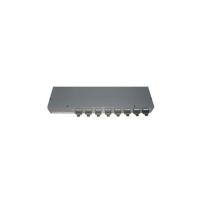Comprehensive QoS policies and security mechanisms
The switches classifies complex traffic based on packet information
such as the 5-tuple, IP preference,ToS, DSCP, IP protocol type,
ICMP type, and CoS. Each port supports eight priority queues and
multiple queue scheduling algorithms, such as WRR, SP, WRR+SP.
Together, these features ensure high-quality voice, video, and data
services.
The switches provides multiple security measures to defend against
Denial of Service (DoS) attacks, as well as attacks against
networks or individual users. DoS attack types include SYN Flood
attacks, Land attacks,Smurf attacks, and ICMP Flood attacks.
Attacks on networks refer to STP BPDU/root attacks. Attacks on
users include bogus DHCP server attacks, man-in-the-middle attacks,
IP/MAC spoofing attacks, and DHCP request flood attacks. DoS
attacks that change the CHADDR field in DHCP packets are another
type of attack aimed at users.
Powerful support for services
The switches supports IGMP v1/v2/v3 snooping, IGMP filter, IGMP
fast leave, and IGMP proxy. The S3500 supports wire-speed
replication of multicast packets between VLANs, multicast load
balancing among member interfaces of a trunk, and controllable
multicast, meeting requirements for IPTV and other multicast
services.
Energy conservation, and low radiation
The switches uses an energy-saving integrated circuit design to
ensure even heat dissipation. Idle ports can enter a sleep mode to
further reduce power consumption. Radiation produced by the
switches is within the standard range for electric appliances and
causes no harm to the human body.
Easy deployment and maintenance free
Supports SNMP v1/v2c and provides flexible methods for managing
devices. Users can manage the switches using the CLI and Web NMS.







